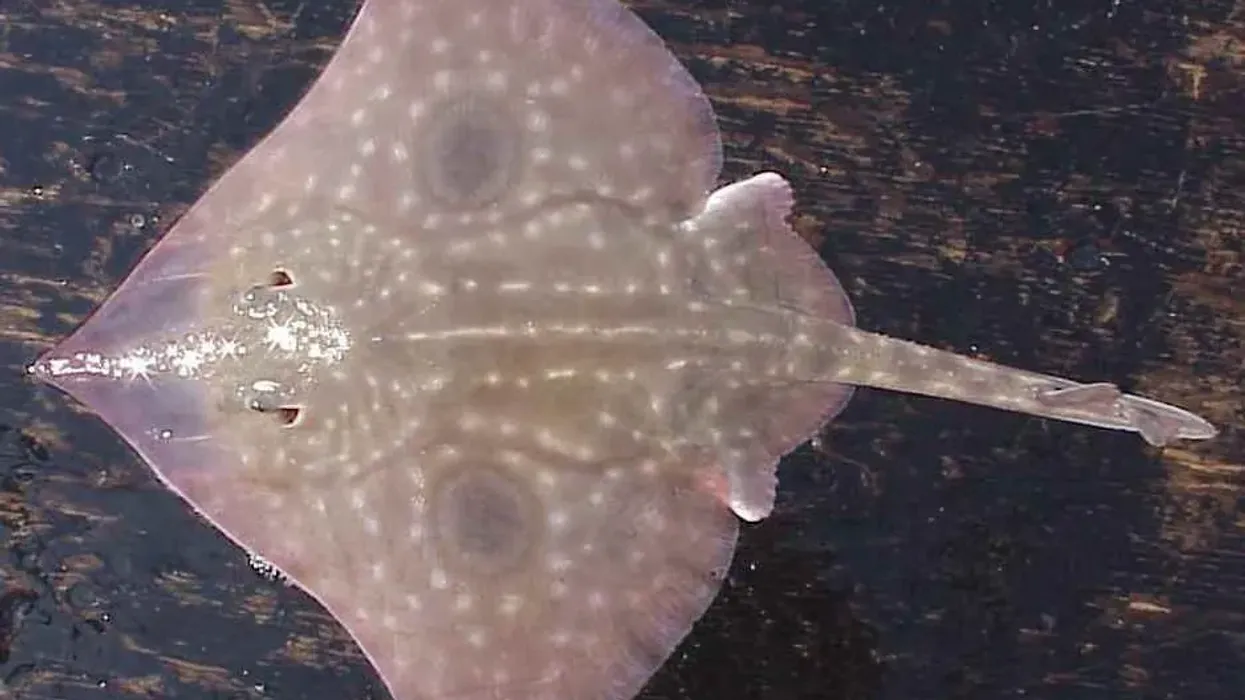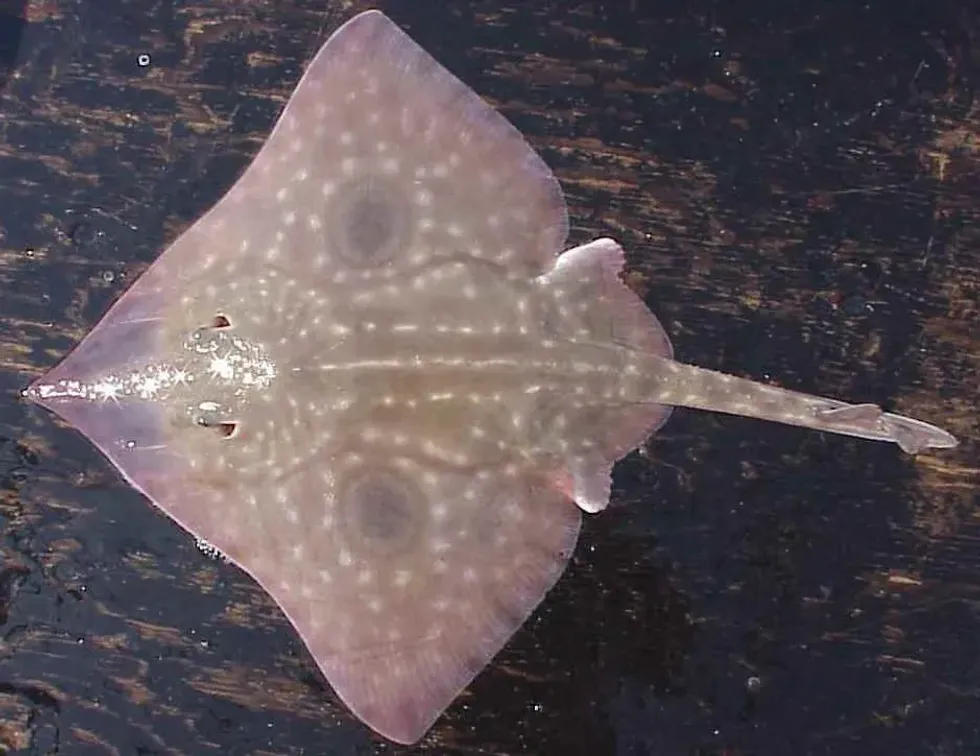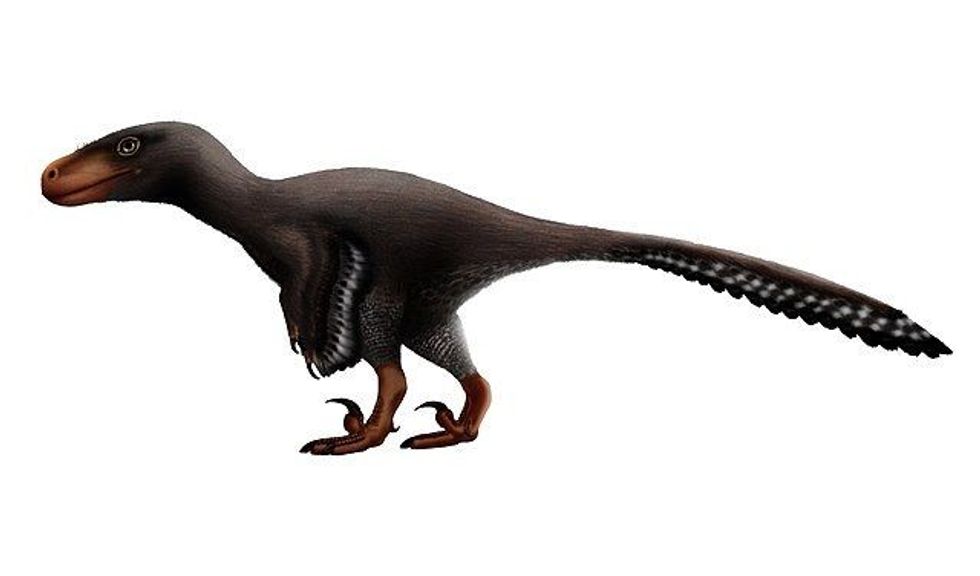In this article, we will read about the largest skate found in North America - the big skate (Raja binoculata previously, new scientific name Beringraja binoculata). This fish can be found on the Pacific coast, especially in California, and its range extends from the Bering Sea, the Aleutian Islands, to Cedros Islands.
The big skate habitat mostly consists of muddy and sandy bottoms in estuaries and coastal bays. These skate species are large in size.
The big skate food consists of mollusks, worms, and small fish. They have a diamond-shaped body which is mottled gray to reddish-brown on the top with scattered dark blotches all over its body.
They have a pointed snout. Their two small dorsal fins are present on its tail.
Apart from their dorsal fins, the pectoral fins appear to have small dark spots, which are actually their dark eyes. The placement of these 'eye spots' on their fins works as a mechanism to confuse predators about their actual size.
Keep reading to find out more about these large skates in the Pacific.
If you enjoy reading this article, be sure to check out thorny skate and pond skater!
Big Skate Interesting Facts
What type of animal is a big skate?
Big skate (Raja binoculata earlier, now Beringraja binoculata) is a type of skate fish belonging to the family Rajidae.
What class of animal does a big skate belong to?
Big skate belongs to class Chondrichthyes, order Rajiformes, family Rajidae and genus Beringraja. The clearnose skate also belongs to the Rajidae family.
How many big skates are there in the world?
Since the big skate species can be found on the vast sea coast off California and in other places of the Pacific range, it is difficult to calculate its population. Therefore, more studies need to be conducted to calculate the total population of big skates in the world.
Where does a big skate live?
The big skate is the largest skate species in North America. They can be found along the Pacific coast that ranges from Alaska to Baja California, California. In California, this is one of the more popular skate species that are caught. Apart from California, they are found in the Bering Sea, the Aleutian Islands, and the Cedros Islands.
What is a big skate's habitat?
The big skates can be found in large numbers in various estuaries, coastal bays, and on sandy and muddy bottoms found on the continental shelf. It prefers staying in relatively shallow waters and doesn't go any deeper than 390 ft (118.9 m).
Who does big skate live with?
Most skates can be found leading solitary lives. However, during breeding or hunting, they can be found in groups as well.
How long does a big skate live?
The lifespan of the big skate is dependent on where it is found. The big skates found in British Columbia are said to have a long lifespan at about 26 years. The big skates in Alaska, however, have a shorter lifespan and live up to 15 years.
How do they reproduce?
There are no specific months for breeding. The eggs are laid by female big skates throughout the year. The big skate is oviparous.
Each big skate egg capsule mostly contains more than one embryo. The big skate egg capsule is the biggest one found in all skates.
The egg capsules measure approximately 9-12 in (22.8-30.5 cm) long and are about 4-7 in (10.2-17.8 cm) wide. The corners of the case have broad and blunt horns, and the egg capsules are oblong in shape.
Each egg capsule contains about one to seven eggs. The eggs are laid on sandy or muddy areas. The young big skate fish emerge after about nine months.
What is their conservation status?
The big skate (Raja binoculata earlier, now Beringraja binoculata) has been evaluated and been listed as 'Least Concern' by the International Union for Conservation of Nature or the IUCN in the Red List of Threatened Species.
Big Skate Fun Facts
What does big skate look like?
The big skate, like most skates, has a diamond-shaped body. It is the largest skate species found in North America. Their eyes are small and dark, located on their pectoral fins.
Their two small dorsal fins are present on its tail. The adult big skate back is mottled brown to reddish-brown in color and also has certain splattered dark blotches. They also have a pointed snout.
How cute are they?
Due to their diamond-shaped body and the placement of their eyes, the skates appear to be really cute. Their appearance is similar to the stingray.
How do they communicate?
Skates like the big skate are known to communicate with the help of their electric organ. These skates usually have two electric organs that are paired. The discharges made by the electric organ of the skate are said to assist in communication for reproduction.
How big is a big skate?
Big skate, as its name suggests, is a large skate that has a length of about 5.9 ft (1.8 m). The longest big skate, however, had a length of about 7.9 ft (2.4 m). They are smaller than the reef shark.
How fast can a big skate swim?
More research needs to be conducted to calculate the swimming speed of a big skate.
How much does a big skate weigh?
The big skate size is huge, and it has a weight of about 201 lb (91.2 kg). The big skate is about two times heavier than the bat ray, which weighs about 99.2 lb (45 kg).
What are the male and female names of the species?
There are no unique names that are used to refer to males and females of this species.
What would you call a baby big skate?
No distinctive names are used to identify the baby skate fish. They may simply be called young skate fish or juvenile skate fish. When the young big skate emerges, they have a length of about 7-9 in (17.8-22.9 cm).
What do they eat?
The big skate diet mostly comprises marine invertebrates like worms, crustaceans, mollusks, and benthic fishes. Juvenile skate fish mostly consume the worms and the mollusks.
Are they aggressive?
Bug skates are not known to be aggressive. They do not cause any harm to human beings either.
Would they make a good pet?
Due to the large size of the big skate, this fish would not be suitable to keep as a pet in a home aquarium.
Did you know...
Big skates breathe through their modified gill slits known as spiracles. They take the water in through these spiracles and push it down through the gills present on the bottom side of their bodies.
The placement of their eyes on the pectoral fins acts as a mechanism to confuse predators about their actual size.
One of the most unique big skate characteristics is its ability to reproduce through an egg case known as the 'mermaid's purse'. The big skate egg case is the largest egg case found on any skate.
Naming the big skate
This species was first described in the year 1855 by Charles Frédéric Girard. The big skate scientific name has an interesting history. The 'bi' in 'Binoculata' refers to two in Latin, and the 'ocalatus' means eyed.
Therefore, its name means two-eyed, which refers to its eyes that look like dark spots located on its pectoral fins. The name 'big skate' was simply given to this species due to its large size. The big skate is the largest skate species found in North America.
Are big skates endangered?
The big skate has been evaluated and listen to as 'Least Concern' by the International Union for Conservation of Nature or the IUCN in the Red List of threatened species. The big skate is not endangered as currently, its population seems to be stable.
Skate fish, however, have slow growth and reproductive rates. This affects its population growth. Skates like the common skate or the blue skate have been evaluated as 'Critically Endangered' by the IUCN.
Here at Kidadl, we have carefully created lots of interesting family-friendly animal facts for everyone to discover! For more relatable content, check out these African lungfish facts and black ghost knifefish facts for kids.
You can even occupy yourself at home by coloring in one of our free printable fish coloring pages.









